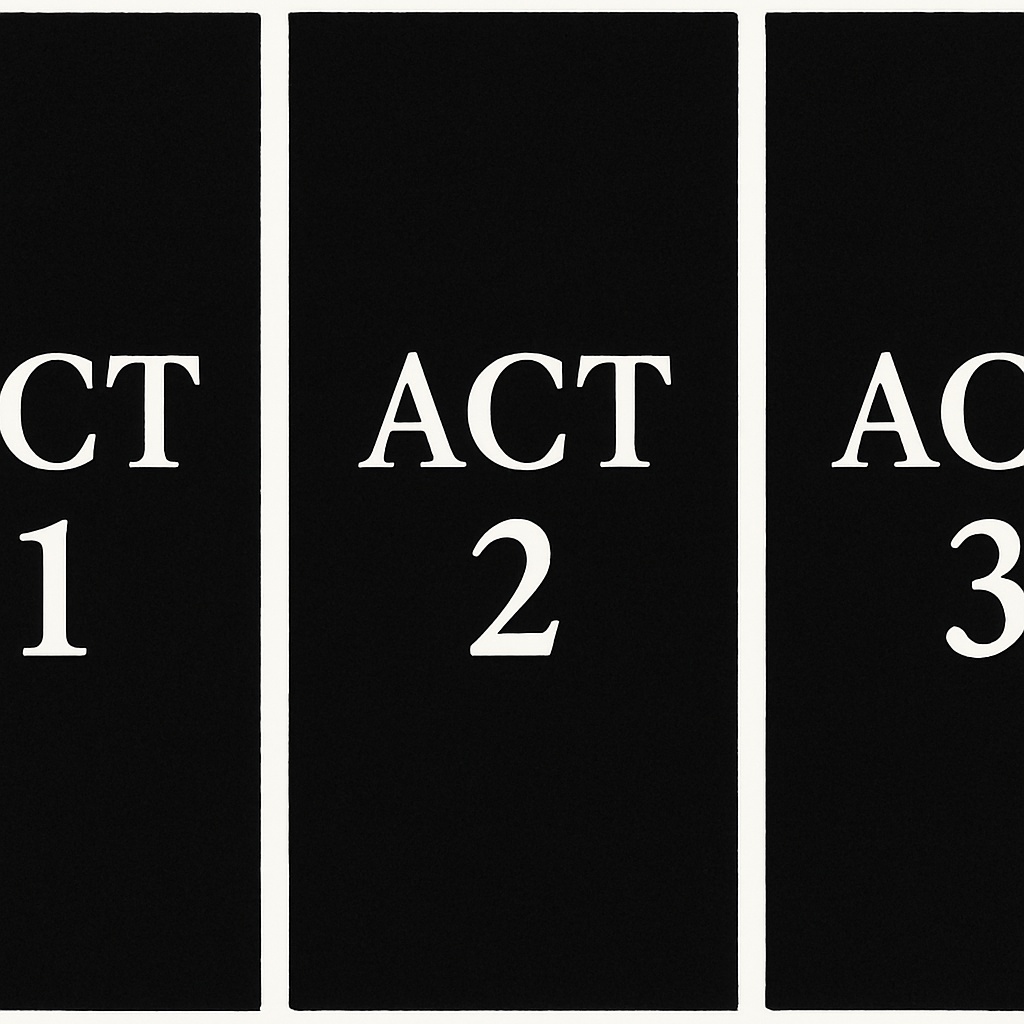If you've ever found yourself turning pages well into the night, gripped by a sense of tension and suspense, you’ve already felt the pull of a great thriller. But writing a bestselling thriller novel requires skill and careful planning. Whether you’re an aspiring thriller writer or simply curious about how to write a thriller novel that hooks readers from the first line, this guide breaks it all down into clear, manageable parts.
Let’s explore how to craft unforgettable characters, come up with gripping ideas, and build a world that keeps readers on edge.
Jump to:
Recommended for you!
Best SellersWhat Is a Thriller Book?
A thriller book is a story that revolves around high stakes, rising tension, and the constant threat of danger. These stories are designed to keep readers on the edge of their seats, eager to know what happens next.
The definition of the thriller genre often overlaps with others, such as mystery, crime, or action, but what distinguishes a thriller is its relentless pace and emotional intensity. Common traits of the thriller genre include:
- A protagonist who is often in peril or uncovering a dangerous secret
- A powerful antagonist or threat
- A fast-paced plot with twists and turns
- Themes of justice, betrayal, revenge, or survival
What’s the Difference Between Horror and Thriller?

The key difference between horror and thriller lies in the emotion they aim to evoke. Horror seeks to scare, disturb, or shock, often using supernatural or grotesque elements. A thriller, on the other hand, aims to build suspense and tension. It’s about anticipation rather than fright.
For example, Jaws is widely debated — is it a horror or a thriller? While it contains terrifying moments, the tension, chase, and psychological fear make it lean more towards a thriller.
How to Write a Thriller Novel: 12 Steps
Writing a thriller that keeps readers turning pages takes careful planning and sharp storytelling. The 12 steps will guide you in building tension, character, and momentum.
Step 1: Start With a Gripping “What If?”
Every memorable thriller begins with a thought-provoking idea —a moment of tension waiting to be unravelled. Ask yourself: What if something went terribly wrong in an otherwise ordinary situation? This kind of premise is at the heart of many great thrillers. For example:
- What if a woman discovered her husband was living a double life?
- What if a detective started to suspect he was investigating the wrong suspect?
- What if a stranger showed up claiming to know a deadly secret?
When you build your thriller around a compelling central question, you immediately create a sense of suspense that drives the plot forward. This applies whether you're writing a short story or a full-length novel.
Step 2: Hook Readers with a Strong Beginning
Your opening scene should grip your reader from the very first line. Think less about background information and more about intrigue, shock, or emotional disruption. You might start with:
- A sudden disappearance
- A mysterious phone call
- A decision that goes horribly wrong
- A scene that ends with a question unanswered
Great thrillers rarely begin with long explanations. Instead, they throw readers into the moment and let the details unfold over time. A strong opening sets the tone for the rest of your novel.
Step 3: Create High-Stakes Conflict

Thrillers thrive on danger, urgency, and emotional pressure. The stakes need to rise with every chapter. These can be physical (a character is being hunted), emotional (a family is breaking apart), or psychological (the protagonist is questioning their sanity).
Make sure the protagonist always has something important to lose. Then, gradually tighten the screws. Each action should have a consequence. The reader should constantly be asking, How can things possibly get worse? And often, they should.
Step 4: Develop Complex, Relatable Characters
No matter how exciting your plot is, flat characters will undermine it. Your reader must care about who’s in danger. Your protagonist doesn’t need to be perfect; in fact, flawed characters are often more interesting. Give them:
- A strong motivation
- A clear internal or external struggle
- Something they desperately want or need to protect
Villains matter too. The best antagonists aren’t evil for the sake of it. They believe they’re justified, or they want something that conflicts directly with the hero’s goals. In psychological thrillers, character depth becomes even more essential. What the character thinks and feels is just as important as what they do.
Step 5: Build a World That Amplifies Tension
Whether your story is set in a cramped flat, a bustling city, or a remote village, your world-building should add to the sense of danger or unease. Think about:
- The atmosphere — is it dark, eerie, chaotic?
- The rules — is your protagonist restricted by the law, their job, or secrets?
- The history — what happened here before the story started?
In thrillers, setting and mood go hand in hand. Even a quiet street can feel menacing if you use the right details. Use the environment to reflect your characters’ emotional states or foreshadow what’s to come.
Step 6: Structure Your Thriller for Maximum Impact

While you don’t have to follow a formula, many thriller writers rely on a version of the three-act structure, just with more twists and sharper pacing. A classic thriller structure might look like this:
- Act One: The inciting incident disrupts the protagonist’s life. A threat emerges.
- Act Two: Tension builds. Secrets are revealed. The protagonist faces setbacks.
- Act Three: A major twist or confrontation. The climax resolves the central threat — or doesn’t.
No matter how you structure it, remember that every scene should either raise the stakes or complicate the problem.
Step 7: Keep Chapters Punchy and Pacy
Pacing is one of the most important tools in thriller writing. Short chapters, cliffhangers, and shifts in perspective can all help you maintain momentum.
Make sure your writing is intentional, and avoid scenes that don’t push the story forward. A good rule of thumb is to end each chapter with a hook or question, encouraging the reader to turn the page.
Even quiet moments should feel loaded with meaning. If something isn’t building tension, character, or plot, consider cutting it.
Step 8: Surprise the Reader, But Play Fair
Twists are part of what makes thrillers good, but only when they feel earned. Readers enjoy being fooled, but not cheated. If you’re introducing a major twist, lay the groundwork early with subtle clues or red herrings. Think about:
- What assumptions do readers make?
- How can you subvert those expectations?
- Will the twist deepen the emotional impact or simply shock?
Twists work best when they alter our perception of earlier events in the story.
Step 9: Finish Strong with a Memorable Ending

You’ve kept readers on edge; now you need to deliver an ending that satisfies. There are several ways to end a thriller:
- A final twist that recontextualises the entire plot
- A moral resolution, where the character has changed deeply
- An ambiguous ending that leaves the reader thinking
Avoid explaining everything in great detail. Sometimes what you don’t say leaves the strongest impression.
Step 10: Refine with the 3 Cs of Thriller Writing
Following the 3 Cs of thriller writing will keep your story tight, engaging, and emotionally grounded. These are:
- Conflict – Every scene needs pressure and resistance.
- Choice – The protagonist must make difficult decisions with real consequences.
- Consequence – Each choice alters the outcome, forcing the character to adapt or fail.
Step 11: Know Your Audience
Understanding the target audience for a thriller can help shape your tone and subject matter. Thriller readers are drawn to tension, urgency, and moral complexity. They enjoy unpredictable characters and bold stakes.
Some readers prefer action-heavy plots. Others want more internal conflict or emotional suspense. And if you’re tackling heavy or potentially upsetting themes, consider adding a disclaimer. It’s a way to show awareness and respect for readers’ boundaries.
Step 12: Outline Before You Write

How to outline a thriller depends on your personal style, but some planning will save you time and stress. Here’s one simple method:
- Write a one-sentence summary of your premise.
- Identify your key characters and what they want.
- Divide your plot into three acts.
- Plan at least one major twist.
- Outline your climax and ending before you start writing.
Common Mistakes in Thriller Writing
Here’s what not to do when writing a thriller:
- Don’t rely on clichés. Readers have seen the “it was all a dream” twist too many times.
- Don’t slow the pacing with long scenes of exposition.
- Don’t forget emotional depth. Stakes mean more when we care about the characters.
- Don’t introduce elements that don’t connect back to the main plot.
- Don’t make your characters behave in unrealistic or unmotivated ways.
Great thrillers feel effortless, but they’re carefully constructed beneath the surface.
How Long Should Thrillers Be?
The ideal length of a thriller depends on the format and scope of your story. Very short thriller stories usually range from 1,000 to 3,000 words and are best for quick, punchy narratives with a single twist or moment of tension.
A short thriller story typically ranges from 3,000 to 7,500 words, providing more room to develop characters and plot.
Thriller novellas span roughly 20,000 to 40,000 words and are ideal for fast-paced stories with one or two subplots.
Full-length thriller novels usually range from 70,000 to over 100,000 words, allowing for complex character development, layered suspense, and multiple twists.
Recommended for you!
Best SellersFrequently Asked Questions
What is the target audience for a thriller?
Thriller readers come from all walks of life, but they usually have one thing in common: they love tension, suspense, and unpredictability. The genre appeals to those who enjoy high-stakes scenarios, moral dilemmas, psychological conflict, and fast-paced action. Depending on the subgenre, your audience might be fans of police procedurals, domestic drama, or international espionage.
Why do thrillers have disclaimers?
Some thrillers explore dark or disturbing themes, such as violence, abuse, or trauma. A disclaimer gives readers a heads-up about potentially sensitive content, allowing them to make an informed decision about whether or not to continue reading. It’s a sign of respect and responsibility, especially in psychological thrillers.
Is there a difference between thriller and psychological thriller?
A psychological thriller focuses more on the internal struggles and mental state of characters. These stories often deal with memory, manipulation, obsession, or distorted perception. While all thrillers involve suspense, psychological thrillers explore why people do what they do, often blurring the lines between reality and delusion.
Do thrillers have to be scary?
While thrillers often provoke fear or anxiety, they don’t have to include horror elements or graphic content. The goal is to keep readers emotionally engaged — that could be through excitement, curiosity, moral tension, or urgency. A thriller can be intense without being frightening.
How many scenes are in a thriller?
There’s no strict number, but most full-length thrillers contain between 60 and 90 scenes. Each scene should serve a clear purpose, whether it develops character, raises stakes, or drives the plot forward. For thrillers, short, impactful scenes are usually more effective than long, meandering ones.
How do you write a bestselling thriller?
To write a bestselling thriller, focus on original ideas, believable characters, sharp pacing, and emotionally resonant themes. Use twists wisely, write clean, engaging prose, and know your audience. Most of all, revise ruthlessly; the best thrillers are tight, well-edited, and intentional.
Study Our Novel Writing Diploma for £29
If you’re ready to take your storytelling further, the Novel Writing Diploma Course at Centre of Excellence is the perfect next step. The course is designed for writers of all levels and covers every stage of writing a novel, from initial idea to final polish. For a limited time, you can enrol for a discounted price of £29!













